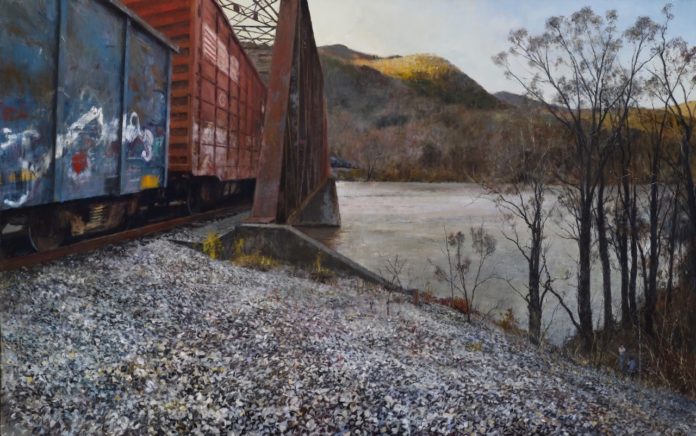Oil Paintings by Julyan Davis > What do the sunny landscapes and interiors of Pierre Bonnard have in common with Davis’s somber oil paintings of the American South? The artist explains in this fascinating essay.
Delay of Revelation: Oil Paintings
BY JULYAN DAVIS
When I’m asked which artist has most influenced me, people are surprised. What do the sunny landscapes and interiors of Pierre Bonnard have in common with my somber oil paintings of the American South? But Bonnard’s influence on me was not his capturing of the Provençal light, strewn like gold and violet petals across the life he and Marthe shared at “Le Bosquet.” Other qualities in his work have changed my way of seeing.
Bonnard’s humility before his subject—that tentative, searching application of paint—taught me to counter a tendency towards the bold, but often half-considered, gesture. Painterly painting succeeds as a campaign of opposites finding balance.
Still more influential, however, was Bonnard’s extraordinary use of composition. Certainly he was a great colorist, but his revolutionary contribution to art was in using emphasis to reinvent pictorial design. Bonnard did not fare well in the ever-narrowing opinion of twentieth-century art history. Picasso waved him aside. His work was dismissed as pretty and inconsequential. This verdict overlooked discoveries that still seem to be best understood only by working painters.
I first learned about Bonnard from the artist and writer Timothy Hyman some thirty years ago, when he gave a talk at my art college in London. I remember hurrying from his lecture to my studio with the discovery of Bonnard’s trick of working on an unstretched canvas tacked to a wall—not so much to allow a painting space to expand, but more to allow cropping the final image with absolute precision.
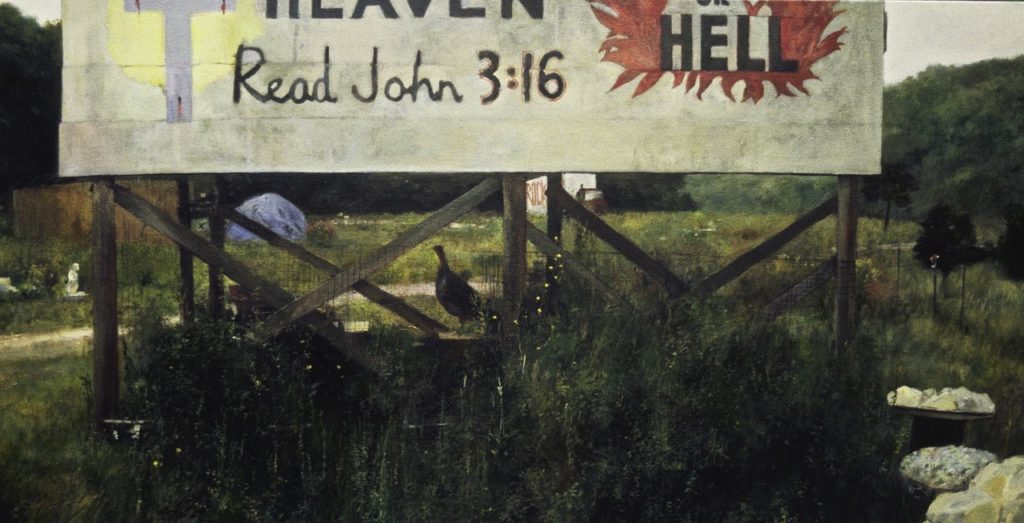
Leaving art school, I focused on landscape painting. For economic reasons—above all the affordability of ready-made frames in standard sizes—I altered my approach to work within those confines, particularly familiar to plein air painters. I wanted to teach myself traditional techniques and composition, and so working in this tradition worked well.
Each day, however, I set aside time to do exploratory work for myself alone. As I recall, I had this idea one could fuse the flat depth of Cezanne’s discoveries with the light of Turner’s work, and that Bonnard’s use of color was somehow the key to this. I did this work on little panels, and I began to notice they either began, or were cropped upon completion, to non-standard sizes.
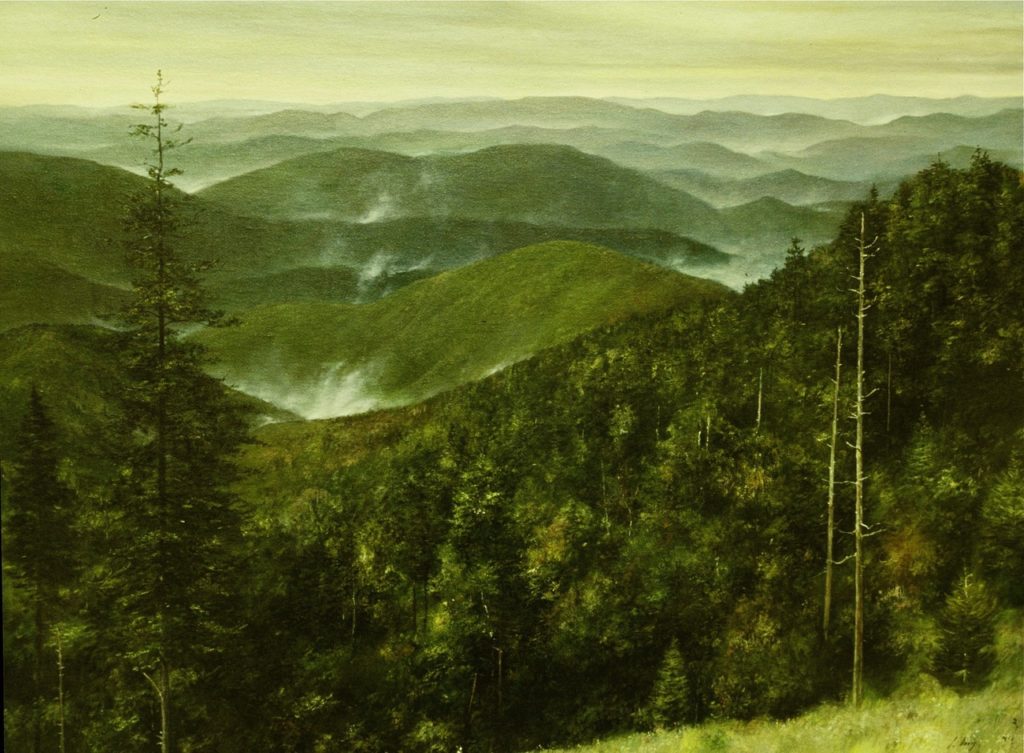
I started painting in Maine each summer, and its strong modernist tradition inspired me. A preference there for contemporary, minimal framing also changed my approach. I could now work on canvases of any size for my oil paintings. As the canvases got bigger, Bonnard came more and more to mind. My public and private work began to fuse, moving away from precise realism.
Can an artist paint time? Certainly an image can be complicated enough—a crowded landscape by Brueghel, for example—so that it cannot be read all at once, but needs to be scrutinized to be understood. But to paint that actual delay of visual comprehension that mimics experience? Surely not. A painting, after all, is a static image seen all at once.
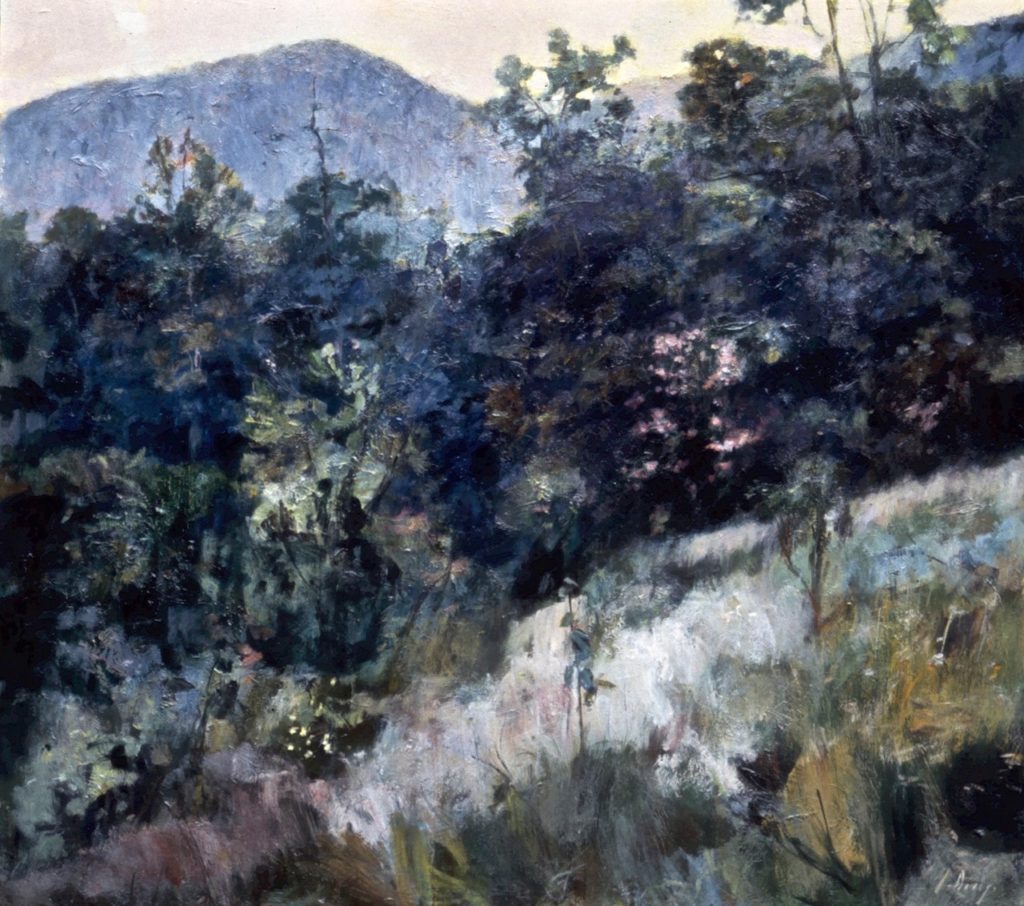
Yet this is what Bonnard set out to do—he wanted to replicate the way we might walk into a room and not visually comprehend everything instantly. He attempted to recreate the way shapes and masses fall, some quickly, some slowly, into recognizable forms. He achieved it primarily through composition, and secondarily through emphasis. He softens focus where you expect clarity, a key figure is placed to be discovered last, proximity and distance exchange priority across the canvas.
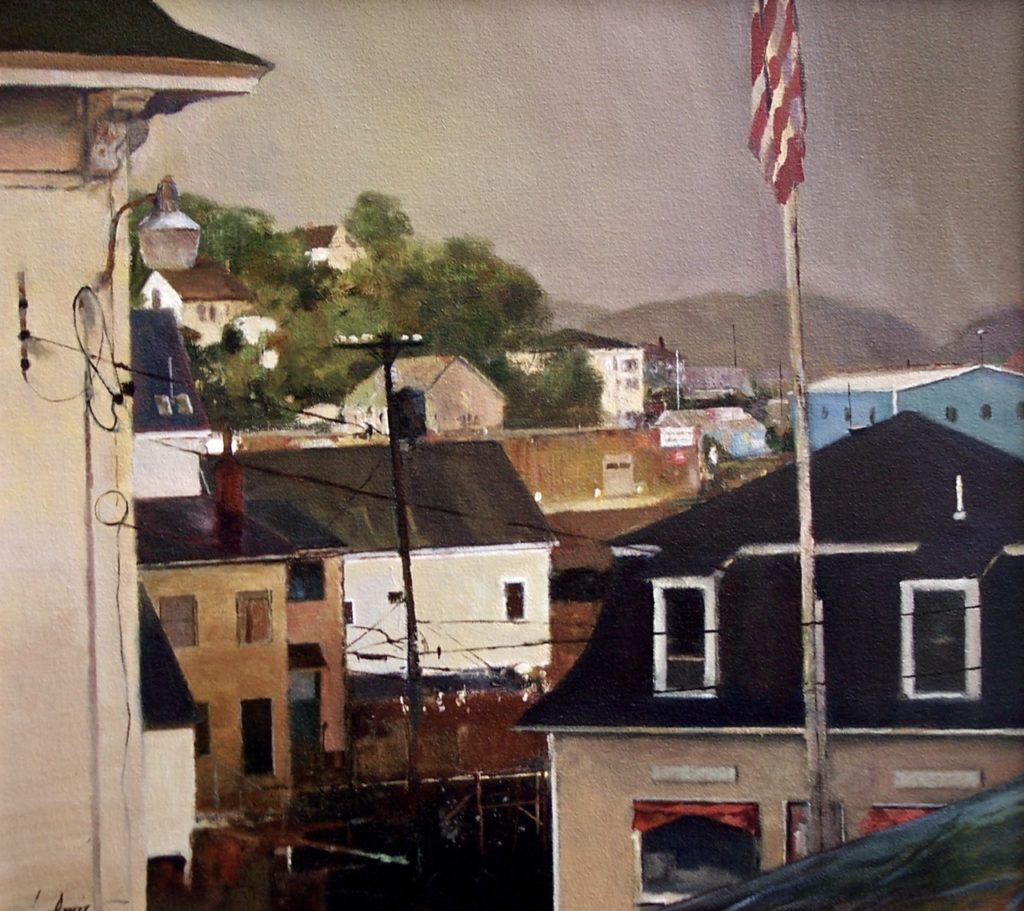
More wonderful still, he does this in such a way that the painting reads differently each time. Revisiting his work is to re-experience that journey to understanding. In a way this repeated journey replicates memory, and I think here Bonnard achieves something akin to Proust. Aside from their shared sensitivity to domestic detail, their work is about time experienced.
A lovely glitch of memory is that our brain often remembers both our first impression of a place as well as the revised impression, informed by experience, of the same. We can summon up a place as it was to us in childhood, huge and strange, or recall it as we saw it last, shrunken and familiar to our adult selves. Bonnard’s paintings somehow pull this off. We remember the first impression, and at the same time, the painting decoded. Fine painters and admiring critics of Bonnard (Tim Hyman and Julian Bell spring to mind) can see this in his work. I’m afraid most people just see pretty colors and indecisive drawing.
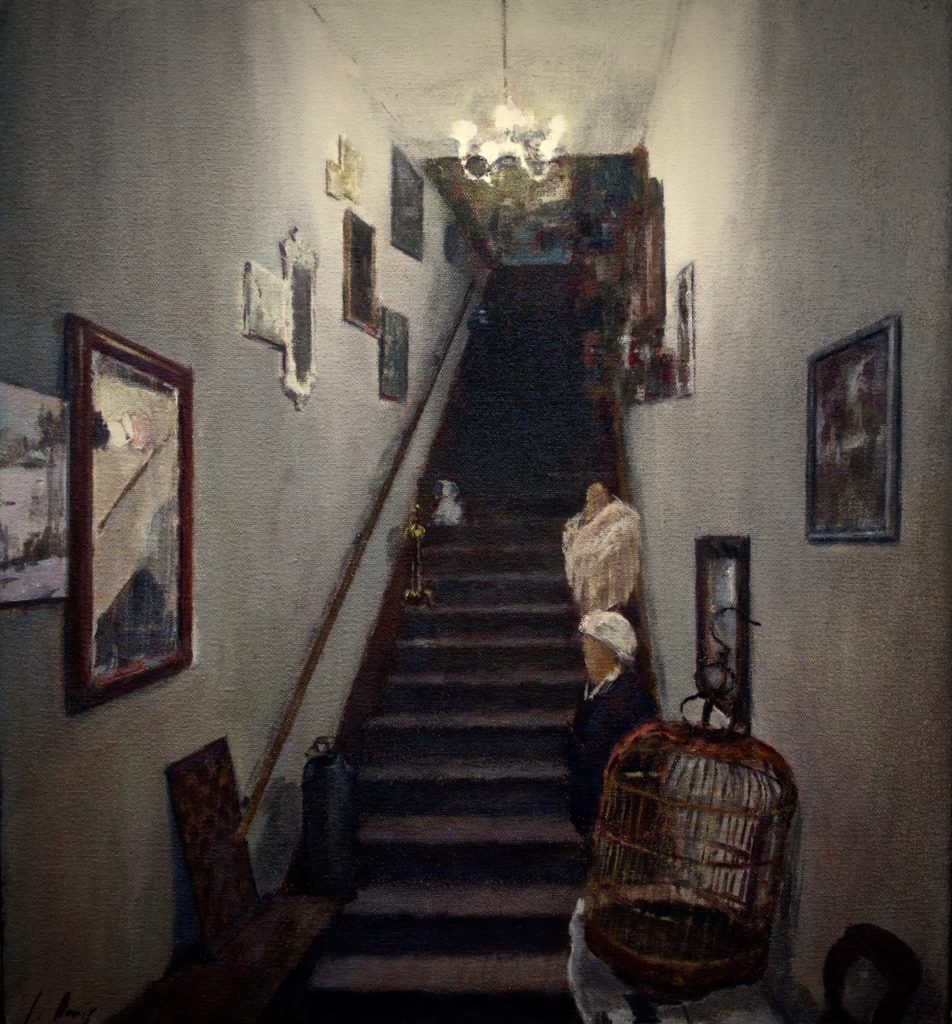
Not surprisingly, when I started painting interiors, this notion of delaying revelation came back to mind with renewed strength. I was painting abandoned homes, old junk shops and flea markets around the South. In painting all that clutter, full of gentle humor but also pathos, Bonnard was my best guide.

Capturing time across narrative work in oil paintings
Several years ago, I began a large series of narrative paintings. These were done for myself and, remaining in my possession, have formed the base of a traveling museum show. The paintings set old Appalachian ballads in the contemporary South. I’m fascinated by how this culture of honor, which traveled from the wild Scottish borders, still affects American society today.
I set myself the impossible challenge of trying to “sculpt time” (as film director Andrei Tarkovsky put it) across a canvas. I adopted cinematic composition. I used the triptych format to mimic complementary “stills.” In a painting of a train rattling over a trestle bridge (below) the eye is meant to pan like a camera across the canvas and only at the last discover two tiny, anguished figures at the river’s edge.

But, for me, at least, this approach only emphasized painting’s limitations, not its strengths. The work was satisfying because it spoke to people, and prompted their imagination, but I felt the need to be more painterly, less photographic.
I went back to Bonnard, and started playing with composition and emphasis, paint handling and color. What is seen first? What is discovered last? The process is ongoing, but I am finding ways in which my narrative work not only provokes the imagination from the first but takes time, no, gives time, to the viewer.
Oil Paintings: Other Narrative Series
This intended journey in viewing my work requires something from the audience, but hopefully it can provoke something akin to the pleasure we feel in reading, as well as completing, a fine short story. I’m trying to make paintings that each person unlocks in their own way. Trickier still, I’m trying to make this process one that visually reinforces for the viewer, by the handling of the paint, detail to detail across the canvas, the emotion I hope them to feel at its conclusion.

The particular history that brought me to the South, straight from art school in London, was the settling of Demopolis, Alabama. In 1817, before the state existed, a group of Bonapartist exiles—top-ranking generals and aristocrats among them—tried and failed to wrestle a “vine and olive colony” out of the tangled canebrakes. I loved this story and am finally painting a series as a symbolist version of it. The writer Bernard Malamud described his “measure of astonishment at the nature of life.” As an artist, I feel I have always been an outsider, back in England and here also, and always will be. I feel a connection to any left to shake their head at circumstance.
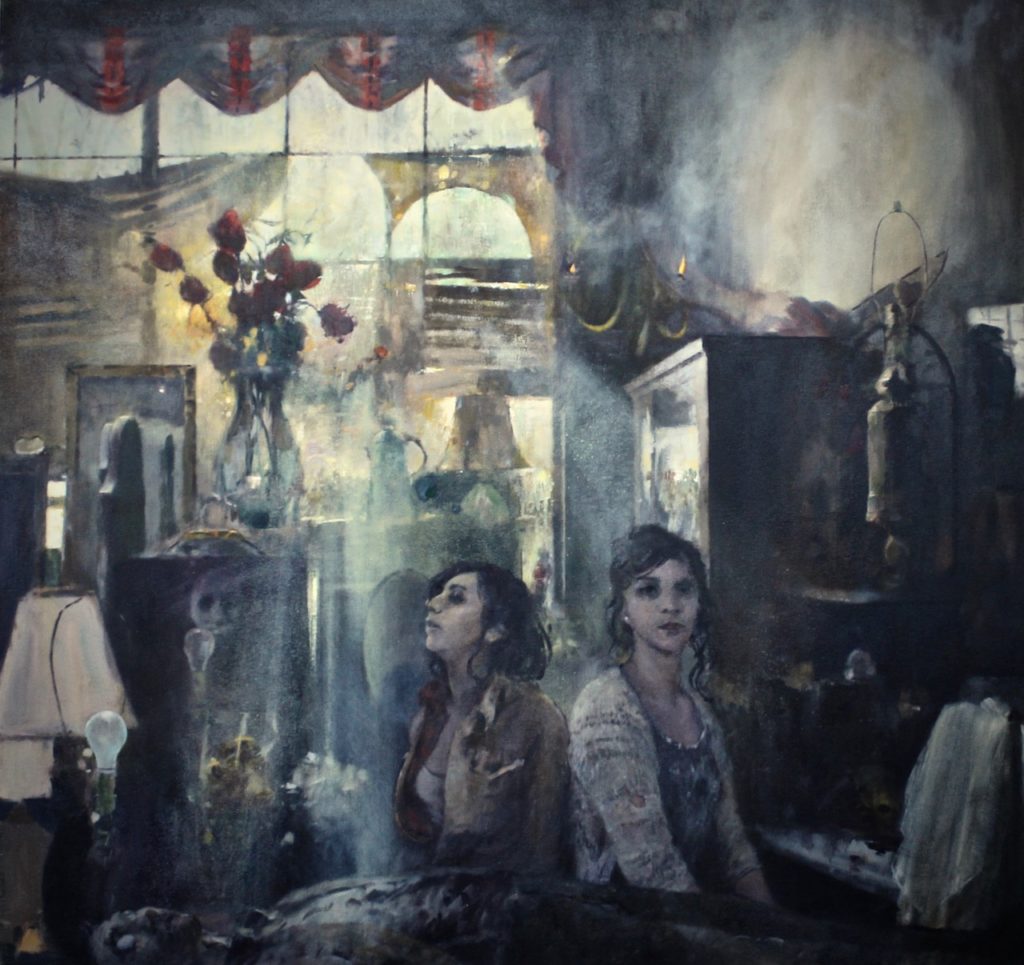
This canvas is on the easel as I write. I feel, looking at it, that my debt to Bonnard is quite apparent. Turner, too. The title comes from Mary Boykin Chesnut’s diary, written during the Civil War. She wrote that the South had heated itself “into a frenzy that only blood-letting could ever cure.” The painting is the first in a series to address the sadness I see in the families of my friends across the South, bitterly divided by belief and opinion.
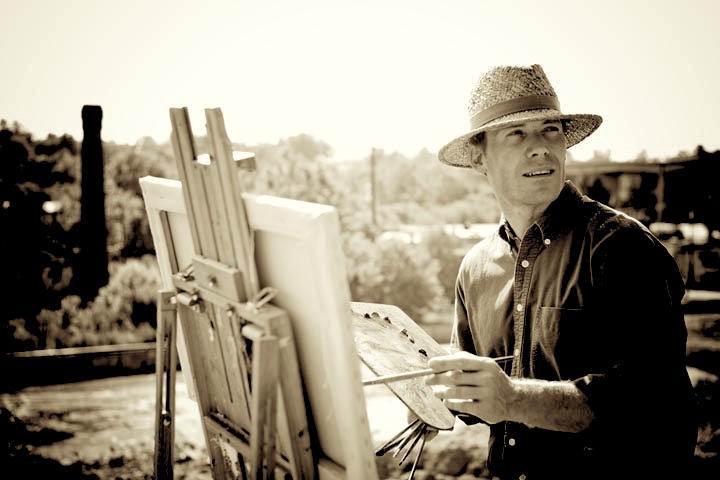 ABOUT JULYAN DAVIS
ABOUT JULYAN DAVIS
Julyan Davis is an English-born artist who has painted the American South for over twenty-five years. He received his art training at the Byam Shaw School of Art in London. In 1988, having completed his BA in painting and printmaking, he traveled to the South on a painting trip that was also fueled by an interest in the history of Demopolis, Alabama, and its settling by Bonapartist exiles.
Davis now lives in Asheville, North Carolina. His work is exhibited internationally and is in many public and private collections. Recent acquisitions include the Gibbes Museum in Charleston and the Greenville County Museum of Art (South Carolina).
Website: http://www.julyandavis.com
> Sign up to receive Fine Art Today, our free weekly e-newsletter
> And click here to subscribe to Fine Art Connoisseur magazine, so you never miss an issue

